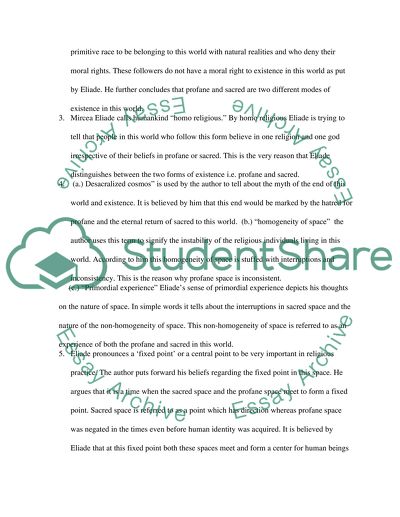Cite this document
(The Sacred and the Profane - The Nature of Religion, by Eliade & Trask Assignment, n.d.)
The Sacred and the Profane - The Nature of Religion, by Eliade & Trask Assignment. Retrieved from https://studentshare.org/religion-and-theology/1565698-eliade
The Sacred and the Profane - The Nature of Religion, by Eliade & Trask Assignment. Retrieved from https://studentshare.org/religion-and-theology/1565698-eliade
(The Sacred and the Profane - The Nature of Religion, by Eliade & Trask Assignment)
The Sacred and the Profane - The Nature of Religion, by Eliade & Trask Assignment. https://studentshare.org/religion-and-theology/1565698-eliade.
The Sacred and the Profane - The Nature of Religion, by Eliade & Trask Assignment. https://studentshare.org/religion-and-theology/1565698-eliade.
“The Sacred and the Profane - The Nature of Religion, by Eliade & Trask Assignment”, n.d. https://studentshare.org/religion-and-theology/1565698-eliade.


